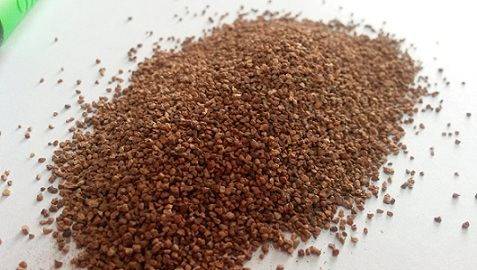Turbine oil is used for lubrication of various components of steam and gas turbines, hydrocompressors, turbine pumps, hydro-turbines and similar equipment. Turbine oil can also be used as fluid in regulation systems.The oils can be natural or synthetic. The former are made from crude oil distillates after deep purification. The necessary properties are ensired by additives. Synthetic turbine oils, in chemical terms, are triarilphosphates, pure in most cases, however, chlorine additions are also possible.There are certain important requirements to oils used in process equipment. The actual requirements are determined by the specifics of the machinery, but some common for this oil type:
- good oxidation stability in operating temperature range (usually 60ºС to 100ºС);
- protection of steel surfaces from corrosion;
- chemical neutrailty to ferrous and non-ferrous metals;
- no influence on non-metal components;
- these oils must not form a stable emulsion with water entering the system during operation.
During operation, the machinery accumulates sludge and water that cause electric corrosion of bearings, decrease reliability of the system and damage turbogenerator shaft seals. Bushings and chocks can also be damaged. All of the above cause costly repairs. The performance of turbine oil decreases along with their service life.Since 20-25% of all the failures of machinery are related to degradation of turbine oil, it is best to prevent the undesired consequences. To do so, turbine oils are regenerated. The nature of the process is complete or partial restoration of quality and performance by elimination of oxidation products, water and particulate matter.In practice this is done by a sorbent, Fuller’s earth.
Fuller’s earth (also known as bleaching earth or clay) is a mineral material with good absorption capabilities. It can absorb high-polymeric substances, allowing it to be used for regeneration of turbine oils.This process is implemented in the CMM-R unit, a mobile oil regeneration plant, made by GlobeCore.Turbine oil first passes through Fuller’s earth. In the process, the contaminants and products of oil decay are trapped in sorbent granules. When the sorbent is saturated, it is reactivated, and all contaminants are removed into a special collector. Fuller’s earth can be reactivated multiple times, which is a significant advantage. Regeneration process does not have to be stopped for sorbent reactivation and replenishment. Besides, the process is environmentally friendly, since sorbent, when it is finally exhausted, can be disposed of as regular construction waste.The end result is restoration of oil’s performance to the level of new oil, reliable operation of your equipment and savings on repairs and spare parts.



